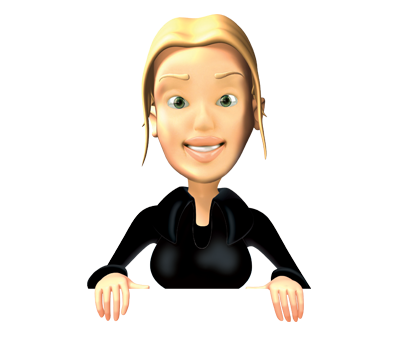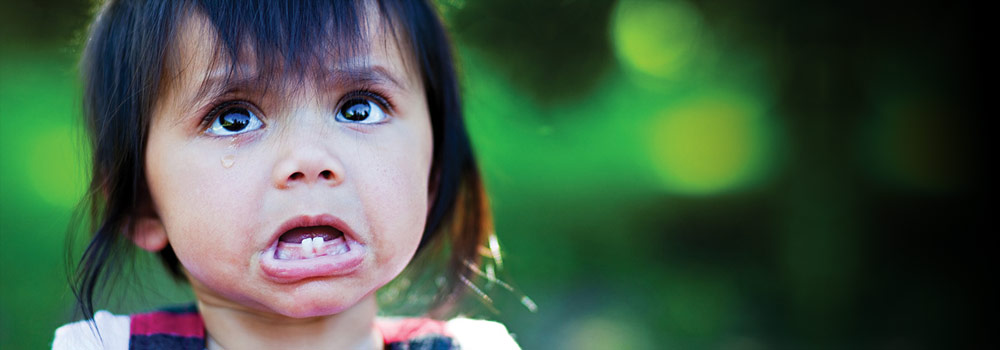The time when babies get their first primary teeth (milk teeth) varies. A few are born with a tooth already, whilst others have no teeth at one year. Teeth generally start to show when a child is four to nine months old, although every baby develops at their own pace. This is known as ‘teething’. Some babies show few signs while others find it more uncomfortable. Some teeth grow with no pain or discomfort at all. At other times you may notice that the gum is sore and red where the tooth is coming through, or that one cheek is flushed. Your baby may dribble, gnaw and chew a lot, or just be fretful.
Some people attribute a wide range of symptoms to teething, such as diarrhoea and fever. However, there is no research to prove that these other symptoms are linked. You know your baby best. If their behaviour seems unusual, or their symptoms are severe or causing you concern, talk to your health visitor or GP.
As soon as teeth appear, think about your child’s tooth care routine and brush them twice daily. The most important time is last thing before bed and once more during the day. Use a toothbrush with a small head and medium bristles. Children under three years should use a smear of fluoride toothpaste. For children aged 3-6 years a pea size amount is recommended. For maximum protection children up to age six years should use a toothpaste containing between 1350-1500ppm fluoride. Spit don’t rinse after toothbrushing - rinsing washes away the fluoride that protects the teeth.
Never add sugar or honey to solid foods or any drinks.
Make sure your child is registered with a dentist as soon as the first tooth erupts and has regular check-ups. Your dentist will recommend a date for the next check-up, which could be as short as 3 months or as long as one year.
Ask your dentist about fluoride varnish - all children over 3 years should have this applied to their teeth.
NHS dental treatment is free for children under 18 years.
Children and Family Centre staff and health visitors can also give you advice about your child’s oral health - just ask.

If your baby is uncomfortable, you can buy medicine containing a small dose of painkiller, such as paracetamol, to help ease any discomfort. The medicine should also be sugar-free. Make sure you read all instructions and that the product is suitable for the age of your child.
You can try sugar-free teething gel rubbed on the gum.
Ask your health visitor about free oral health packs given at regular health checks.
Dentist’s tooth care tips:
Clean teeth twice a day, for two minutes, especially at night.
Reduce sugars and sugary drinks to meal times only.
Visit the dentist every six months or as advised by your dentist.
Don't give juice drinks in a bottle. Your baby may still like using a bottle as a comforter and suck away on it for hours, giving sugar and acid plenty of time to damage teeth.
Introduce drinks from a free-flow cup at six months and stop bottle feeding by one year. Water or milk are the healthiest drinks for babies.
Try diluting fruit juice 1:10 with water in young children and limit pure juice or smoothies to 150mls per day with a meal for an older child. Use sparkling water instead of fizzy drinks, and remember to dilute squashes very well. Fizzy drinks contain large amounts of sugar and all fizzy drinks (including diet drinks), fruit juices and smoothies contain acid that can erode the outer surface of the tooth.
For help finding an NHS dentist call NHS 111 or visit www.nhs.uk.

It can help to give your baby something hard and safe to chew on, such as a teething ring, which may help to ease their discomfort or pain. Some teething rings can be cooled first in the fridge.
All sorts of things are put down to teething - rashes, crying, bad temper, runny noses, extra dirty nappies. Be careful not to explain away what might be the signs of illness by assuming it’s ‘just teething’.
Source: DoH Birth to five edition 2009.
1
My baby has red cheeks and seems a bit frustrated and grumpy.
2
Ask your pharmacist about options for teething.
3
Try some of the gels or sugar-free baby paracetamol available. If you are worried and things do not feel right contact your health visitor or GP.



